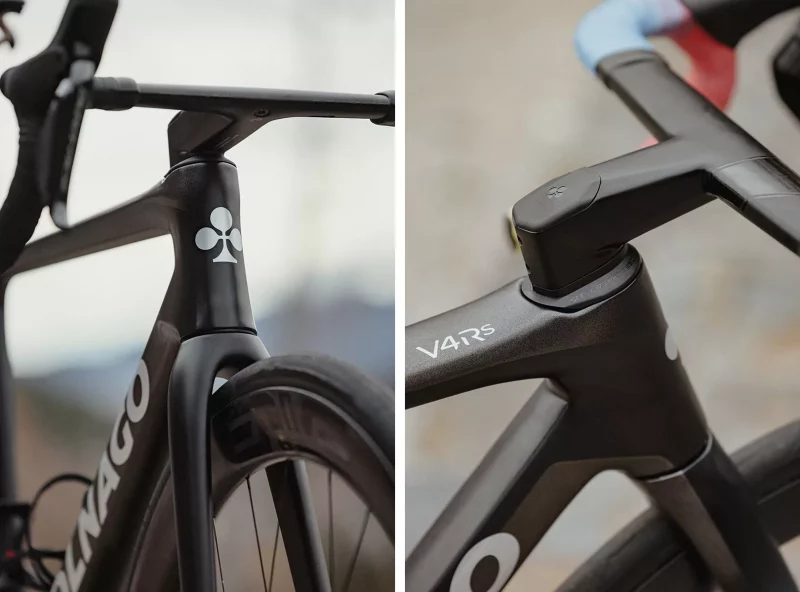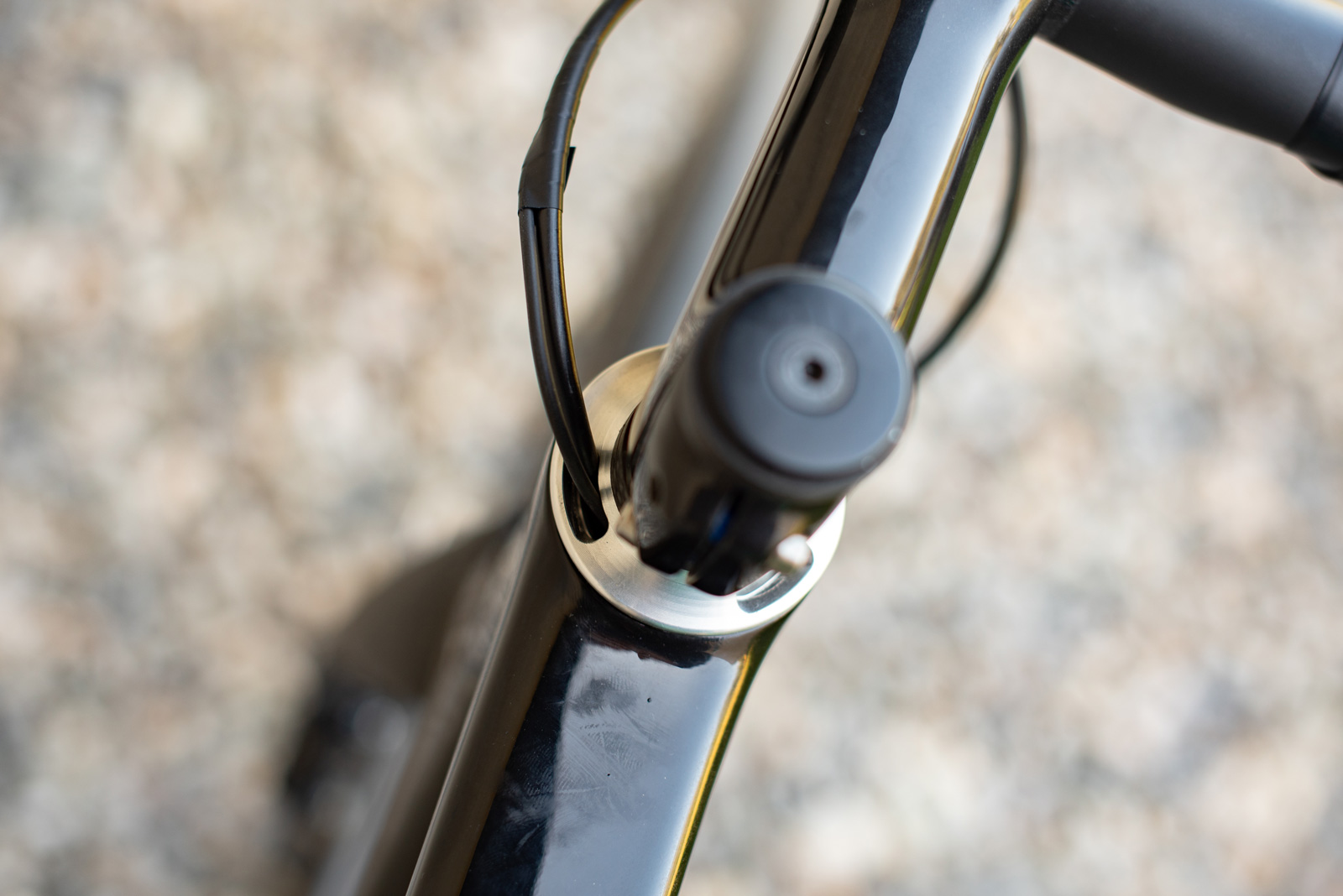Love them or hate them, internal cable routing headsets are ripping through the bike industry like wild-fire. It is one of a series of steps brands have taken toward full integration. Goals include improved aerodynamics, improved aesthetics and, the holy grail, “clean lines”. For some, however, it is a step too far.
Running cables and brake hoses through the headset does, undoubtedly, tidy things up in the cockpit. However, headset-dependent, it does come with additional time spent in the work stand, and the increased labor costs associated with that. Some riders with deep pockets will, I’m sure, be happy to pay the premium, but others are in for a shock.
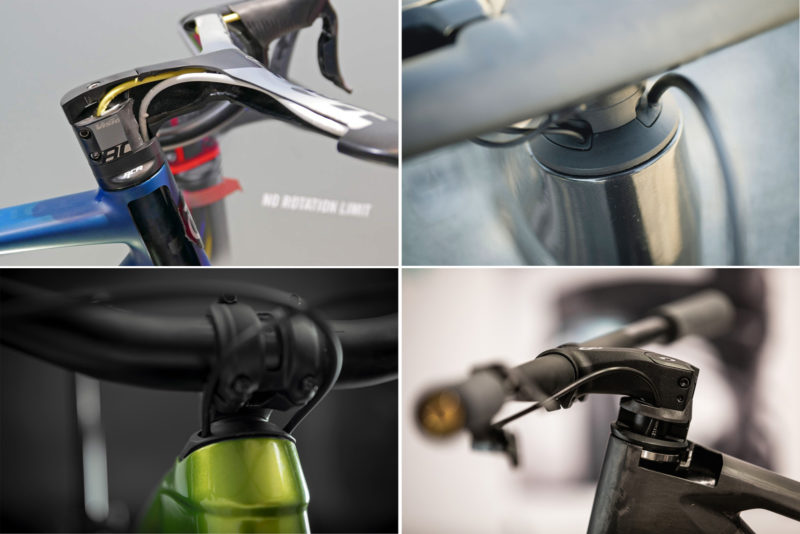
For most riders, it’s their bike mechanic that has to deal with the added complexity of internally routed cables. These folks have put up with years of ever-changing “standards” within the bike industry, so how much will this really bother them? We contacted mechanics from Europe and the US to get their viewpoint on internal headset cable routing, and while some of them did reply with a sense of diplomacy, others were rather more firm in their opinion.
We sent them the following:
“It’s you, the mechanic, who has to deal with the advent of internal headset cable routing that is sweeping across the industry. So, what are your thoughts on it? Is it a good thing, or a bad thing? Are you having to charge your customers more for headset bearing replacements, brake bleeds, cable replacements, and so on? Is it really that much more hassle, or is it easy enough once you’ve done one or two? Would you have it on your personal bike if, in some parallel universe, you weren’t responsible for the maintenance of your own bike?”
Bike Mechanics’ Take On Internal Headset Cable Routing
Joergen at Parallel Handbuilt – Netherlands
What are your thoughts on fully internal, integrated cabling?
I think it’s mostly fine. Often enough it does complicate wrenching on a bike, if the “wrenching” to be done involves getting deeper into the bike, the frame specifically. Some designs on the market require partial or complete disassembly of a bike to do regular (albeit not often done) maintenance such as replacing headset bearings. Some bikes with fully internal and integrated cabling that are ridden in places in conditions that like to eat headset bearings regularly, like cyclocross or mountain bike, should be avoided if you’re asking this mechanic.
Is it a good thing, or a bad thing?
I don’t think it’s either. If a customer is particularly enthused about having all their cables, or in all reality, just two hydraulic hoses, tucked away neatly in their frames, then it’s a great thing! If a client likes DIY maintenance, maintaining their bike more often, or just affordable maintenance, then it is not a good thing. When a bike is sold to a customer and the potential €1000 extra per year on integrated cabling-related maintenance has not been communicated clearly, that is very much a bad thing.
Are you having to charge customers extra?
I don’t charge customers “extra”, but I am definitely forced to charge customers more labour when servicing a bike with this type of cabling and doing repair or maintenance related to, or behind the internal routing. That may be me being pedantic, but it’s an important detail.
A simple headset bearing replacement, something that may be as cheap as € 50-70, can be four to five times as expensive on some internal cable designs because of the necessity to de-cable the bike and re-bleed the brakes after the install.
Is it really that much more hassle, or is it easy enough once you’ve done one or two?
I mean, I’m a bike mechanic, it’s my job to fix the bike in front of me. I wouldn’t describe the repairs done on these more complicated bikes as a bigger “hassle”, it’s just much more work and therefore more cost for the client. To be completely transparent, there are plenty of bikes on the market today with much simpler cabling that are a huge headache for other reasons. Component design and integration is everything.
Is it more difficult that so many bikes use slightly different solutions?
Annoying. Annoying is the word you’re looking for. When a brand “develops” a new solution for better Cable Integration™ but does not, or cannot provide good, independent after-sales support, a relatively simple and painless (albeit expensive) repair turns into a complete headache for me and my client. I’m not naming names, but y’all know who I’m talking about. Some brands have very weak documentation as after-sales support, and in these cases, it is much more difficult, but that is just because you need specific, proprietary components but can’t find an article number for example.
Would you have it on your personal bike if you were not the mechanic?
No. Quite honestly, I don’t like the aesthetics of completely integrated cabling. I love a well-cabled bike, tight curves in good proportions to the other cable(s) and length of the headtube, with a smooth entrance into the downtube or onto the underside of the downtube. I love the ease of maintenance, whether I’m doing it myself or paying someone else to do it. Let me be clear here, I hate a rat’s nest on the front of a bike just like the rest of y’all, but two neat and tidy cables poking out from under the bar tape, snaking into the frame… It just reminds me that a bicycle can be a work of art and design, but also very much a tool and a means to an end.
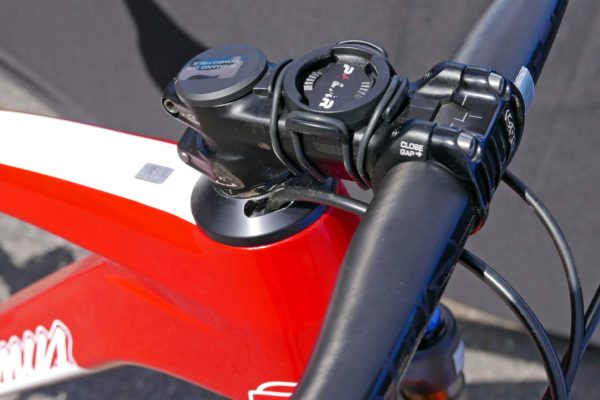
Watts Dixon at Revolution Cycles
I ******* hate it. I get that it looks clean, but so many companies make it such a massive pain to route. Even though we have our many tricks, it’s still too easy to waste an hour trying to get one damn cable through a bike.
Nick Tanner, Bspoke Cycles – Scotland
Marmite. Sums it up for me.
There’s something smart, refined and ‘up-to-date’ about integrated headsets and cabling, but I think this only really applies to the consumer. We have customers curious about the lack of visible cables and which have traditionally been there for decades, and they do, almost without fail, ask ‘is it harder or more expensive to look after’.
Integration lends itself to more expensive component replacement; if you’re paying double the time for a headset service, it makes sense to pay for a more durable headset/bearings, which may be 3 times what you’d normally pay, but if looked after will sometimes outlast the bike. This also encourages some experienced customers to take more care of their bike as they become aware of the increased service costs. Those buying for the first time have no benchmark against which to judge the newer, more expensive costs.
Yes, I’d have full integration on my bike as I like the clean look, and ease of mounting lights, GPS etc, but I don’t charge myself for my time involved in putting my bikes together. Having said that, as an ex-SRAM technician I have very high standards in product and service expectation, and in my opinion the design of many integrated headset components isn’t where it could be; spacers don’t line up, there are gaps between stems and stem caps; if like me you have a bit of bike build OCD it’s frustrating when parts just don’t fit well.
We have customers bring us bikes to assemble that they’ve bought online or elsewhere, and often corners have been cut with factory assembly or lack of QC; no lubrication, cables/hoses too short etc. This adds extra time to a boxed bike build, and yes, we charge more as a result. We always quote a price before starting any work so that the customer has no surprises. We sometimes absorb the cost of an extra barb or compression fitting when swapping brakes from Euro to UK setup, as these are rarely supplied in the range of bikes we see. It depends on the scale of the job and what the bike is in for.
In my opinion the worst aspect of integrated headsets is the default Euro setup; hoses and cables take on ‘memory’ from the factory and boxing, and are often damaged where there isn’t enough clearance within the headset. Carbon frames are generally OK as the tube joints are much larger voids, but alloy frames have such small holes at the joints that the cables or hoses often jam up. I’ve had one severed brake hose, in the box! From my point of view as a mechanic when building a new bike, I would prefer the cables and hoses supplied pre-cut, but left out of the frame. There are a few secret workshop tricks I use to make replacing integrated cables easier and quicker than adjusting and/or replacing those poorly installed at the factory.
As for aero on road bike headsets, how many average riders will experience the watt-saving benefits of hidden cables? How many will find the bar/stem integration size is wrong and require a change? How many small IBDs would absorb the cost of a £500+ one-piece bar/stem combo swap? Will the customer pay another £500 on top of the bike cost? Sadly, the pandemic is still affecting product supply, and in some cases integrated headset components are unavailable until next year, meaning a bike that needs for example a 10mm stem change either doesn’t sell, or will be a sub-optimal fit for the customer for months to come.
Headset integration is clearly here to stay, and I think in time the designs will improve, and with luck, more thought will be given to the practicalities of their fitting and servicing, and the mechanics who do the hard graft. I’m a fan of the concept and the appearance, but I don’t yet enjoy working on them.
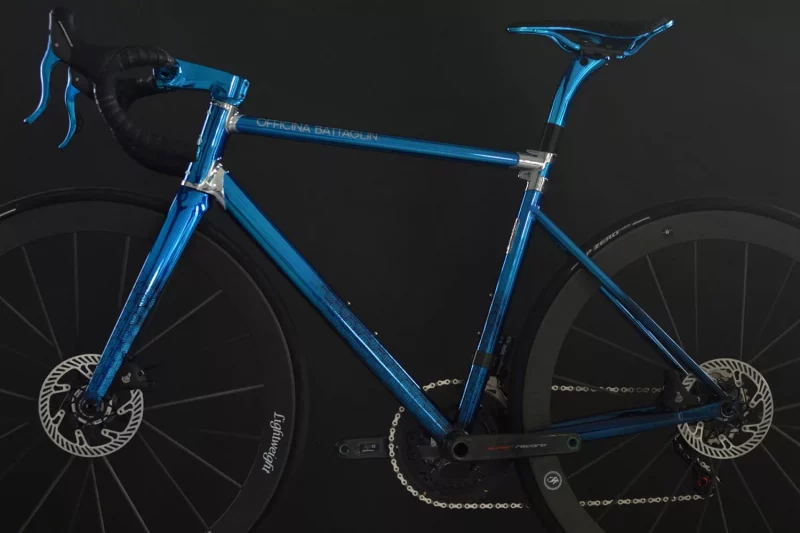
Václav Svatoš, Independent Bike Mechanic – Czech Republic
So, what are your thoughts on fully internal , integrated cable routing?
It is only stylish and an evolution of bicycles and clean design and maybe some watt saving like aerodynamics. From a technical side, it’s horrible for mechanics, users, and designers of components and parts like hydro hoses.
Is it a good thing, or a bad thing?
It is good if aero is important and you need to save watts. It adds time when you need to change position of stem or change headset bearings or you need to take off bars for traveling. All service on the bike with hoses inside the bars, stem, and headset is more complicated and much more expensive.
Are you having to charge your customers extra (or more often) for headset bearing replacements, brake bleeds, cable replacements, etc?
Yes, all is more expensive and I recommend to customers on new bikes to change sub-optimal headset bearings (BMC on so expensive bikes use headset bearings for $10 with a horrible lifetime) for stainless steel bearings with good quality seals. If you need to change bearings, it’s a horrible job when you must cut brake hoses, sometimes change one hose (you can usually use the old rear for front brakes and you need new one for rear). Changing the rear brake hose is sometimes not easy (it’s a question about the BB area). If you need to change headset bearings, it’s sometimes a harder job than building a new bike (you must clean up everything, take it all off, and then build again from zero.
Is it really that much more hassle, or is it easy enough once you’ve done one or two?
Yes, it is more complicated. Yes, if you make the same bikes again and again, you know how to do that quickly. But the job time and job steps are the same.
Is it more difficult that so many bikes use slightly different solutions?
Yes. There’s no real standard of this, some companies use traditional headset bearings and some D-shape steerer tubes and without more space for hoses. (You have to forget mechanical groupset!) Some companies may forget to make a hole in the steerer tube for the front brake hose and then only accept the FSA system with hose going into the steerer from the top! That’s the most horrible idea, and the hoses are bent more than 90° in such a small space!
Would you have it on your personal bike if, in some parallel universe, you weren’t responsible for the maintenance of your own bike?
On my bike… for my money? No never. I will have a 100% functional bike without feeling the rear brake hose if you turn the bars. I need bikes with easy removal of the fork to service the headset, change a headset spacer, for easy for traveling, easy to change handlebars or change levers, etc. So, no.
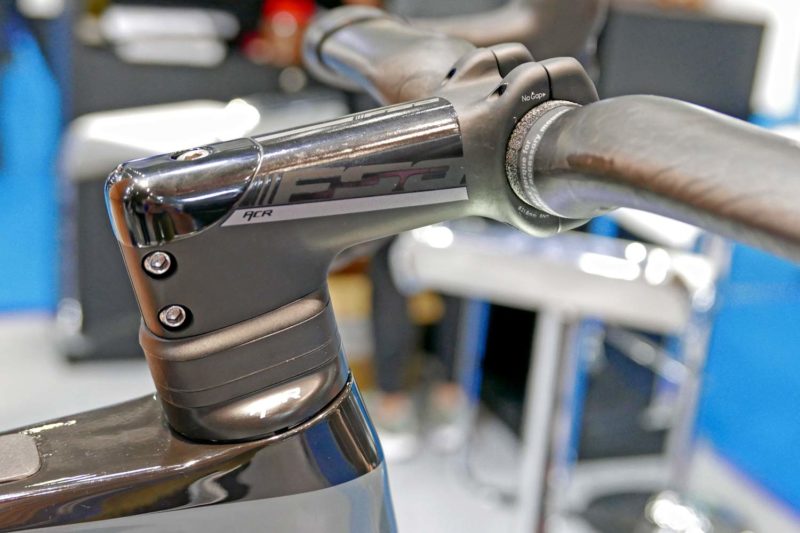
James at Analog Cycles – Vermont
At Analog, all we do is build adventure bikes. Anything that makes a bike harder to field service is bad for the customer out on tour, and any hole in the frame that doesn’t need to be there is a place for water to get in and also a place where the frame is weaker. This has been born out by testing bikes with and without internal routing holes in controlled impact and fatigue tests carried out in Taiwan for our sister company Tanglefoot Cycles.
Internal cable housing also bangs around in a frame, which makes customers think they have a frame crack when really it’s just crappy engineering. I’d be more with the internal headset routing if there was a full length tube to capture the housing the entire way. This would eliminate banging noises, water egress, and the PITA of fishing a cable out. Yes there are good techniques out there for getting a bit of cable through, but these don’t always work (i.e. sometimes a customer has pulled all the cables out in a DIY effort, etc) and fishing a cable through a frame is no one’s idea of a good time. Additionally, if you look at how much wear a bit of housing causes on a paint job to the point of frame wear, even on a steel bike, one must wonder about a cable housing smacking and rubbing against a paint-less, hidden steerer tube made of plastic. Seems like an accident waiting to happen.
So, what are your thoughts on fully internal, integrated cable routing? It’s also pointless for bikes that rarely are moving at peloton speeds.
Is it a good thing, or a bad thing? Fine for crazy road bikes I guess, pro bikes…
Are you having to charge your customers extra (or more often) for headset bearing replacements, brake bleeds, cable replacements, etc? We charge a premium for all internal routing. Headset routing isn’t harder than frame routing, but it takes more time so you need to charge more.
Is it really that much more hassle, or is it easy enough once you’ve done one or two? Easy enough, the issue isn’t ease of use on a workstand.
Is it more difficult that so many bikes use slightly different solutions? Of course it’s a pain in the ass. How could it not be? New standards mean new tooling, more education for staff, more time spent on youtube the first few go rounds.
Would you have it on your personal bike if, in some parallel universe, you weren’t responsible for the maintenance of your own bike? Hell no. The most I’d do would be internal routing with a brazed in place brass tube on a gravel or road bike top tube or chainstay. I don’t think the headset routing looks good, it looks cheap, like a Walmart bike solution to not braze on cable guides. What would Pacific do? Internal routing! A lot of this stuff is just for manufacturers to tout marginal weight savings over last year’s model. If you do away with downtube cable ports or housing bosses, you move the port to the headset, and suddenly your frame is X amount of grams lighter. It’s all a scam, there is no legit reason outside of aerodynamics to move the routing to the headset. So, if you see this routing on anything but a pro level bike, and you think it’s rad, you’ve been had.
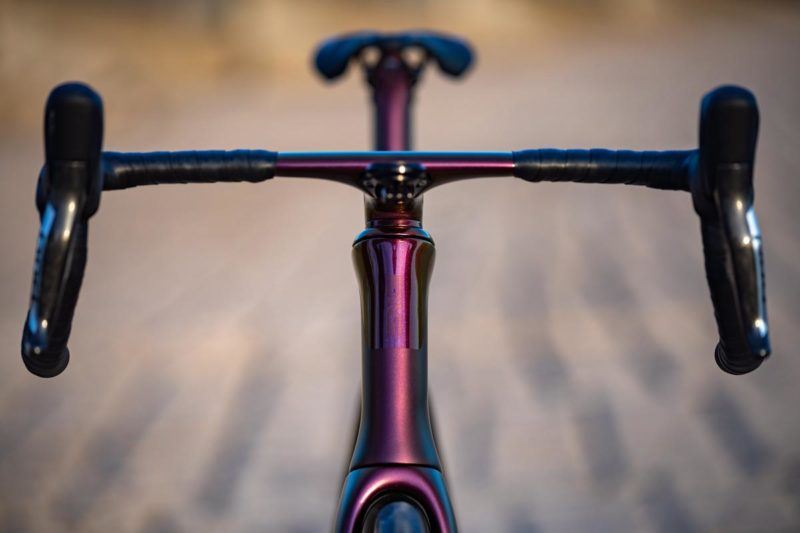
Mitch Graham of BioWheels – Madeira, OH
I guess we take the approach that it doesn’t do us much good to complain about what the industry does with internal routing or new standards on the bread-and-butter bikes that we sell and service. It is what it is. If most customers are in favor of these features (many are looking for full integration), then we have to be. The average price for a bike we sell is $6000 which means that now more than half of the bikes we sell to folks have fully internal routing. We are used to dealing with them, and they definitely get easier the more you work on them (especially if you are seeing the same models in front of you over and over again.) Looking back now into our workshop, both bikes being tuned up have full internal routing. So more and more service bikes coming in are internal. We charge hourly for service, so we run the clock once we start work on a bike, and bill for our time. So yes we have to charge more because these bikes are always going to take longer to service than the previous generation.
Would I personally choose a bike with traditional routing or fully internal? Great question. I guess since I want the new Moots CRD road bike more than I want the previous model – I would have to say fully internal for me! They just look awesome.
What effect does internal routing have on bike fitting? There isn’t enough time during a bike fit to swap a fully integrated bar/stem out, so that job usually gets pushed to the service department of our shop, or the fit client’s shop back home. We use a fully-adjustable GURU fitting bike for the actual bike fit, so we are able to get the customer their measurements from that (which then would get transferred onto their bike).
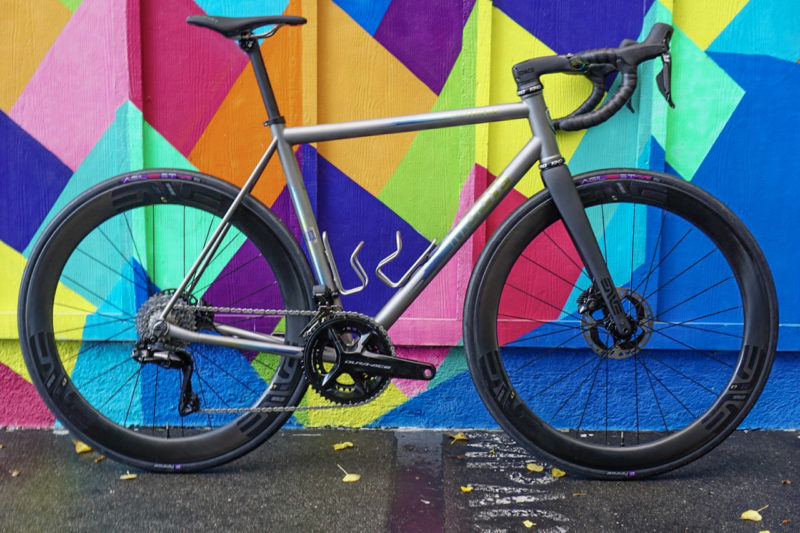
Felix Wolf, Light Wolf Studio – Germany
What are your thoughts on fully internal, integrated cable routing? Everybody wants it, nobody’s needing it, but we’ll do it anyways.
It can only be an aesthetic thing since there’s no technical advantage from our point of view.
We see way more disadvantages.
Is it a good thing, or a bad thing? It’s a trend of this time.
As a custom bike builder, we’re in the lucky position to carefully pick our products and of course convince our customers for the best solution.
Most bikes we build nowadays come with AXS or Di2 shifting. So we’ll have only two brake hoses. Our second advantage might be selling bikes to custom fit. Thus, we can cut these two hoses exactly to the length needed by knowing spacer stack, stem and handlebar specs. This way we can achieve a very clean look without squeezing hoses though small parts.
So most bikes don’t come with full integration. But if it comes with internal routing we have strict rules:
We’re not building bikes with 2x mechanical drivetrain and integrated cables – 1x only in some rare cases. We just want to avoid the negative effect of stiff cables effecting your steering, and to minimize the risk of rattling. To conclude: we only use systems that really work well and can be really picky to avoid downsides for us and the customer.
Are you charging our customers extra (or more often) for headset bearing replacements, brake bleeds, cable replacements, etc?
Actually we’re not charging extra or more often, we just charge per hour in the workshop. And a headset bearing replacement took minutes in the old days. Now it’s hours to open and re-bleed two hoses and perhaps also need to remove the BB for rerouting the rear one – depending on the brake system. I assume most customers don’t take that into account and will be shocked by the high workshop bill. There are some internal routing systems out there that leave bearings uncovered. I bet this will affect headset lifetime. But for us it’s simple – we just don’t sell bikes with that kind of integrated solution.
Is it really that much more hassle, or is it easy enough once you’ve done one or two?
In most times, its a pain in the ass and the mechanic needs to grow a third arm. But of course, only a few bike mechanics are used to it by working on integrated solutions daily. And with more bikes coming with these integrations, we’ll get used to it and evolution might help with a third arm in the future. We’re in a comfortable position again with a boutique workshop, carefully assembling each bike. If a build needs any longer – we’ll have the time and patience.
Is it more difficult that so many bikes use slightly different solutions? We don’t see so many different solutions. There’s a bigger upper bearing, a carved upper race, split-able spacers and a stem and handlebars with lots of holes. They may differ in particular shape, but the system used is always quiet similar.
Would you have it on your personal bike if, in some parallel universe, you weren’t responsible for the maintenance of your own bike? To be honest, I’m just planning a new ride with everything that a bike shop used to hate: fully integrated cables and proprietary parts. You guessed it right – because it looks cool!
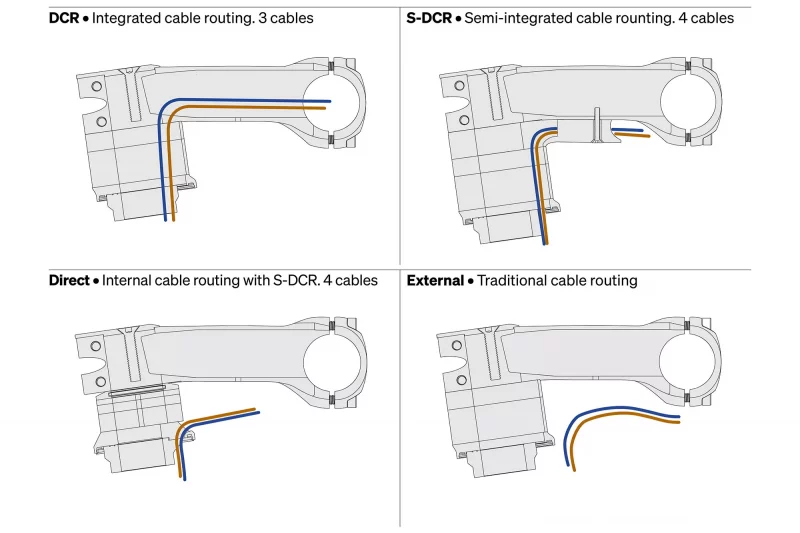
Evan Robinson of Steady State Cycles – Pittsburgh
The current trend for running hoses and cable/wires through the headset is great. Creating a clean cockpit makes any high-end road bike look much more stylish. If there are marginal gains from having the hoses inside the headset, I am here for it.
But I think it is criminal, absolutely criminal, for this to be on lower-end and mechanical bikes. Oversize headset bearings require replacement less often. Getting into the head tube to clean and grease the interfaces between the bearings and the frame is a little pain in the ass, but on many high-end bikes, not a deal breaker.
I had a customer that did 10,000+ miles a year in western Pennsylvania and needed a headset after two seasons. The bike was due for an overhaul anyways, so other necessities absorbed the cost. I also think a good practice as a mechanic to replace the cable housing rather than the inner cables alone is a professional practice, and now that becomes an extremely expensive job on an entry-level bike.
